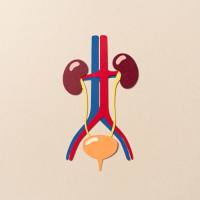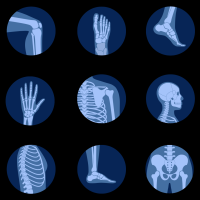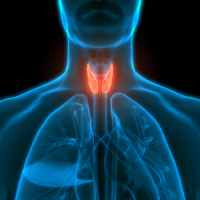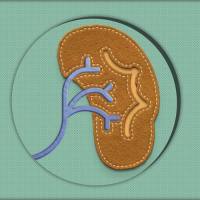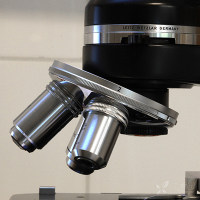美国儿科学会:≥35周胎龄新生儿高胆红素血症处理:临床实践指南的修订(第一部分)
FROM THE AMERICAN ACADEMY OF PEDIATRICS| CLINICAL PRACTICE GUIDELINE| AUGUST 05 2022
Clinical Practice Guideline Revision: Management of Hyperbilirubinemia in the Newborn Infant 35 or More Weeks of Gestation
Alex R. Kemper, MD, MPH, MS, FAAP; Thomas B. Newman, MD, MPH, FAAP; Jonathan L. Slaughter, MD, MPH, FAAP; M. Jeffrey Maisels, MB BCh, DSc, FAAP; Jon F. Watchko, MD, FAAP; Stephen M. Downs, MD, MS; Randall W. Grout, MD, MS, FAAP; David G. Bundy, MD, MPH, FAAP; Ann R. Stark, MD, FAAP; Debra L. Bogen, MD, FAAP; Alison Volpe Holmes, MD, MPH, FAAP; Lori B. Feldman-Winter, MD, MPH, FAAP; Vinod K. Bhutani, MD; Steven R. Brown, MD, FAAFP; Gabriela M. Maradiaga Panayotti, MD, FAAP; Kymika Okechukwu, MPA; Peter D. Rappo, MD, FAAP; Terri L. Russell, DNP, APN, NNP-BC
Address correspondence to Alex R. Kemper, MD. Email: alex.kemper@nationwidechildrens.org
This document is copyrighted and is property of the American Academy of Pediatrics and its Board of Directors. All authors have filed conflict of interest statements with the American Academy of Pediatrics. Any conflicts have been resolved through a process approved by the Board of Directors. The American Academy of Pediatrics has neither solicited nor accepted any commercial involvement in the development of the content of this publication.
FUNDING: No external funding.
FINANCIAL/CONFLICT OF INTEREST DISCLOSURES: Dr Newman reported providing expert witness consultation in medical malpractice litigation. Dr Maisels reported providing expert witness review and testimony in kernicterus medical malpractice litigation. Dr Watchko disclosed a financial relationship with McGraw Hill. Dr Grout reported receiving grant funding from Pfizer for a non-pediatric study. Dr Bogen disclosed a Board of Directors relationship with Mid-Atlantic Mothers’ Milk Bank. No other disclosures were reported.
Pediatrics e2022058859.
https://doi.org/10.1542/peds.2022-058859
Connected Content
A commentary has been published: Applying an Equity Lens to Clinical Practice Guidelines: Getting Out of the Gate
- Split-Screen
- Views
- Share
- Tools
- Search Site
Subjects:
Evidence-Based Medicine, Hyperbilirubinemia
Topics:
hyperbilirubinemia, phototherapy, bilirubin, exchange transfusion, whole blood
More than 80% of newborn infants will have some degree of jaundice.1,2 Careful monitoring of all newborn infants and the application of appropriate treatments are essential, because high bilirubin concentrations can cause acute bilirubin encephalopathy and kernicterus.3 Kernicterus is a permanent disabling neurologic condition characterized by some or all of the following: choreoathetoid cerebral palsy, upward gaze paresis, enamel dysplasia of deciduous teeth, sensorineural hearing loss or auditory neuropathy or dyssynchrony spectrum disorder, and characteristic findings on brain MRI.4 A description of kernicterus nomenclature is provided in Appendix A. Central to this guideline is having systems in place including policies in hospitals and other types of birthing locations to provide the care necessary to minimize the risk of kernicterus.
This article updates and replaces the 2004 American Academy of Pediatrics (AAP) clinical practice guideline for the management and prevention of hyperbilirubinemia in the newborn infant ≥35 weeks’ gestation.3 This clinical practice guideline, like the previous one, addresses issues of prevention, risk assessment, monitoring, and treatment.
Guideline Development Process
The AAP convened a clinical practice guideline committee with membership that included neonatologists, hospitalists, primary care pediatricians, a nurse, and breastfeeding experts. Some members also had special expertise in neonatal hyperbilirubinemia. This committee worked from 2014 to 2022 to review new evidence and to identify opportunities to clarify and improve the 2004 guideline. This report underwent extensive peer review by a wide array of clinicians and experts in neonatal hyperbilirubinemia and by parents of children with kernicterus.
The committee recognizes that in the United States and other high-resource countries, the recommended management of hyperbilirubinemia and the risk of kernicterus can differ significantly from countries with more limited resources. The management of hyperbilirubinemia can also vary among high-resource countries where early discharge from the mother-baby unit is less common. The committee recommends caution and incorporation of local expertise in adapting these guidelines for use outside the United States.
This clinical practice guideline provides specific recommendations where evidence or significant clinical experience suggests the benefit of the clinical action. In some cases, options for clinical care delivery are provided when the evidence or clinical experience is less certain. For selected recommendations that are central to this guideline, the subcommittee reports the aggregate quality evidence and the strength of the recommendation according to the AAP policy statement “Classifying Recommendations for Clinical Practice Guidelines.”5 These recommendations are formatted as Key Action Statements (KAS) for easy identification, and the evidence tables supporting them appear in Appendix B. Note that throughout the guideline, the term “parent” is used to represent the caregiver(s) responsible for the infant and “mother” is used to represent the birthing and/or breastfeeding parent.
Previous Guidelines
The 2004 guideline focused on infants ≥35 weeks’ gestation. This gestational age range includes most newborn infants cared for, and subsequently followed by, general pediatricians and other primary care clinicians on well newborn services or mother-baby care units. The 2004 guideline made recommendations for primary prevention (eg, maternal Rh typing and treatment) and secondary prevention (eg, risk- factor assessment and close monitoring for the development of hyperbilirubinemia, and, when necessary, treatment).
In 2009, a commentary describing several clarifications and modifications6 to the 2004 clinical practice guideline was published. These included clarifying the distinction between “hyperbilirubinemia risk factors,” which increase the risk of subsequent hyperbilirubinemia, and “hyperbilirubinemia neurotoxicity risk factors,” which increase the risk of bilirubin neurotoxicity. A new recommendation was for universal predischarge bilirubin screening with measures of total serum bilirubin (TSB) or transcutaneous bilirubin (TcB) linked to specific recommendations for follow-up. Although it is difficult to determine the direct impact of these recommendations, the incidence of hazardous hyperbilirubinemia, defined as TSB ≥30 mg/dL,7 decreased in at least 3 large US health systems after the adoption of universal predischarge bilirubin screening with closer postdischarge follow-up.8–10
Evidence Leading to Changes
Since the publication of the previous guideline, the evidence base regarding the monitoring and treatment of hyperbilirubinemia has expanded. Key new research findings appear in the evidence tables included in Appendix B and in the accompanying technical report.11 In addition, the committee reviewed guidelines from the Northern California Neonatal Consortium12 and the Academy of Breastfeeding Medicine.13 Because the new evidence is insufficient to derive specific treatment thresholds by quantitatively estimating the risks and benefits of different approaches to care, the committee began with the previous AAP guidelines. On the basis of an evaluation of evidence published since 2004, the committee raised the phototherapy thresholds by a narrow range that the committee considered to be safe. The committee also used new research findings to revise the risk-assessment approach based on the hour-specific bilirubin concentration and the approach to rapidly address elevated bilirubin concentrations, defined as “escalation of care.”
(接下文)







